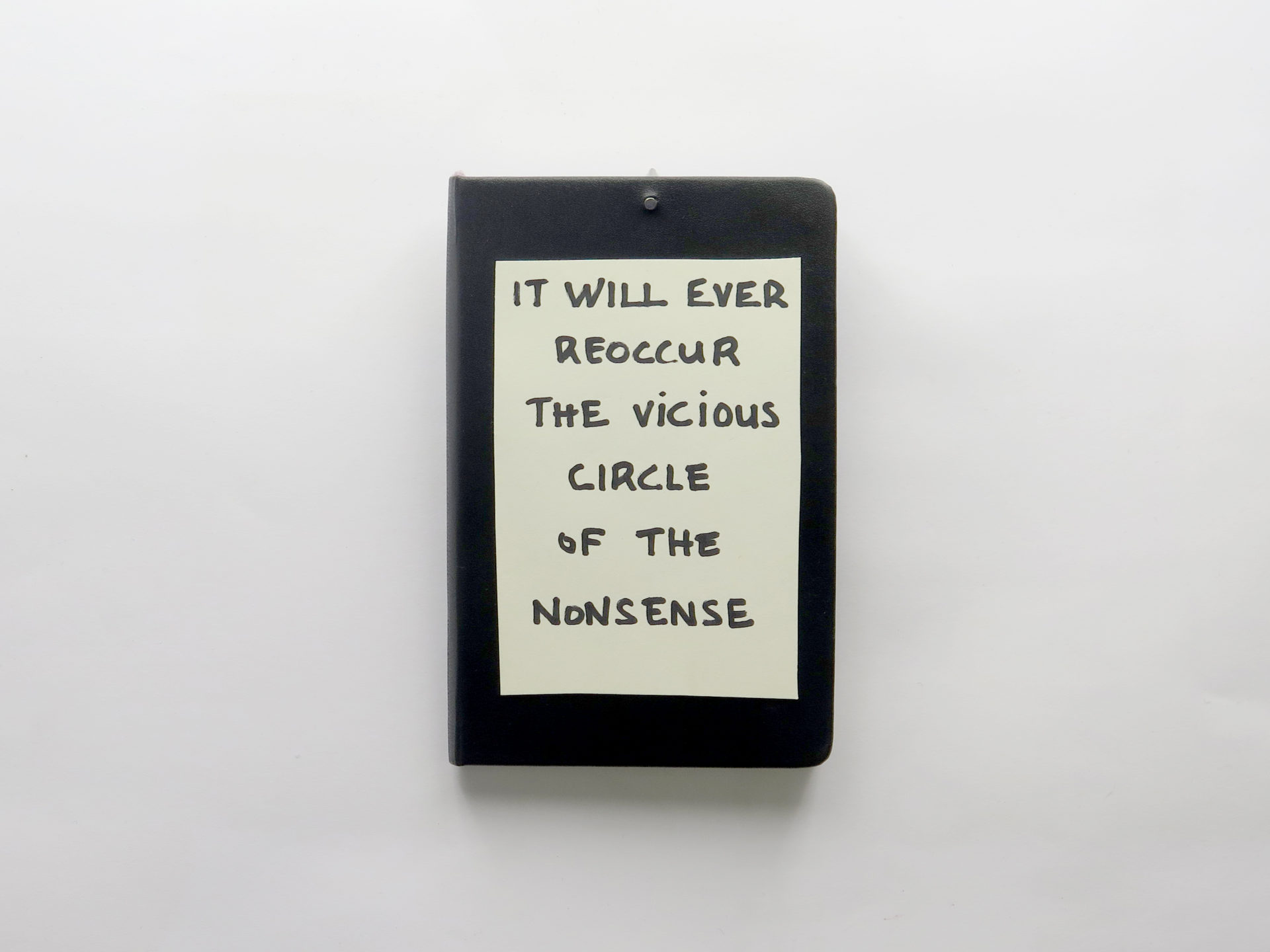
The unopenable, firmly nailed and slightly tilted up notebook stands for the absence of the tableau vivant. Particularly in this era where the artist/cultural practitioner is being politically engaged with actual issues and incidents (of the so-called “daily life”) to a higher degree. And s/he is expected to comment on local and universal (they’re almost no longer different) “problems”, within a very brief period of time and through the lack of (practical) tools and equipment, but with numerable amount of information and paraphernalia. The artist/cultural practitioner is found in a peculiar situation where s/he has to adapt themselves, their practice, and their production (if they produce) to the very special circumstances and rapid changes of the “globe”.
That is the quality of addressing the complexity and existence of (certain) places in the banal and “classical” perspective mostly does not bear satisfying fruits, I am currently focusing on developing, rather experiencing, alternative trajectories where values of (re)presentation, viewing/reading, and understanding intersect. However, the process of deconstructing the photograph to its components (the event of the photograph, the photographer, the photographed object/subject, and what emerges between them) continues to occupy my research-based artistic practice. Yet “new” ways of weaving the political value of photography, practice and product, in “non-political” affairs constitute the core of questions about how to approach that (same) place. How could a field-tour of observing flora be the pretext for addressing landscape, topography, and colony planning through photography? And why would the failure of a love relationship be the trigger of accumulating consequences that provoke both the photograph and the viewer at once? These multilayered concerns on the essence of the photograph stimulate my ways of seeing, together with other “aesthetical” matters of how to juxtapose “static” photographs with moving images, and text. How can these concerns comprehensively convey the personal and the common experience/s of the individual and of the collective, without ignoring actual events and (past) histories that shape memory?